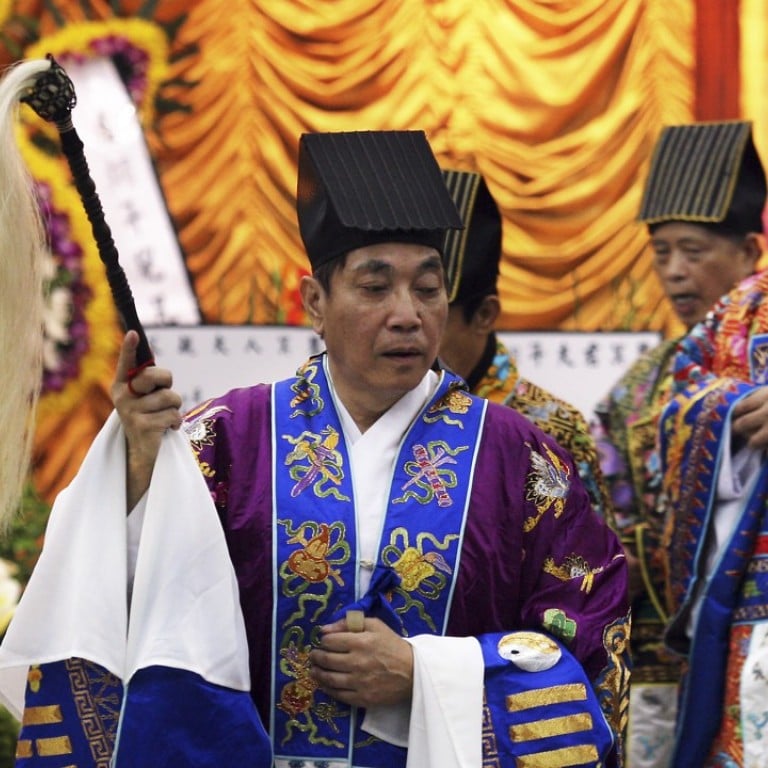
Hong Kong’s Taoist funerals: the superstition, symbolism and how to stop your soul being dragged into the coffin
From swordplay to sweet treats, few Chinese funeral traditions are as involved as a Taoist ceremony. We find out how to ward off evil entities and guarantee a peaceful afterlife for the deceased
Mourners are dressed in loose white clothing, the women hiding their sadness behind large pointy hoods. The ear-piercing, discordant sound from the suona, a woodwind instrument, is played by a priest. At some point, swords will be waved, tiles will be smashed, and paper models of houses, servants and various other objects will be set on fire.
This is the eerie spectacle of a Chinese Taoist funeral ceremony, with rituals, symbolism and ghostly superstitions dating back to ancient times. The most popular choice of funeral service in Hong Kong, the Taoist ceremony places the utmost importance on appeasing malignant spirits to protect the soul of the deceased, and on safeguarding mourners from the spirits’ wicked ways.
“The main theme of the funeral is filial piety, which is a core Chinese value,” says Teresa Law Wai-man, whose family have been in the funeral business for more than 30 years. Her Wing Fook Funeral Home is among a cluster of businesses serving the needs of the bereaved on Wa Fung Street in Hung Hom.
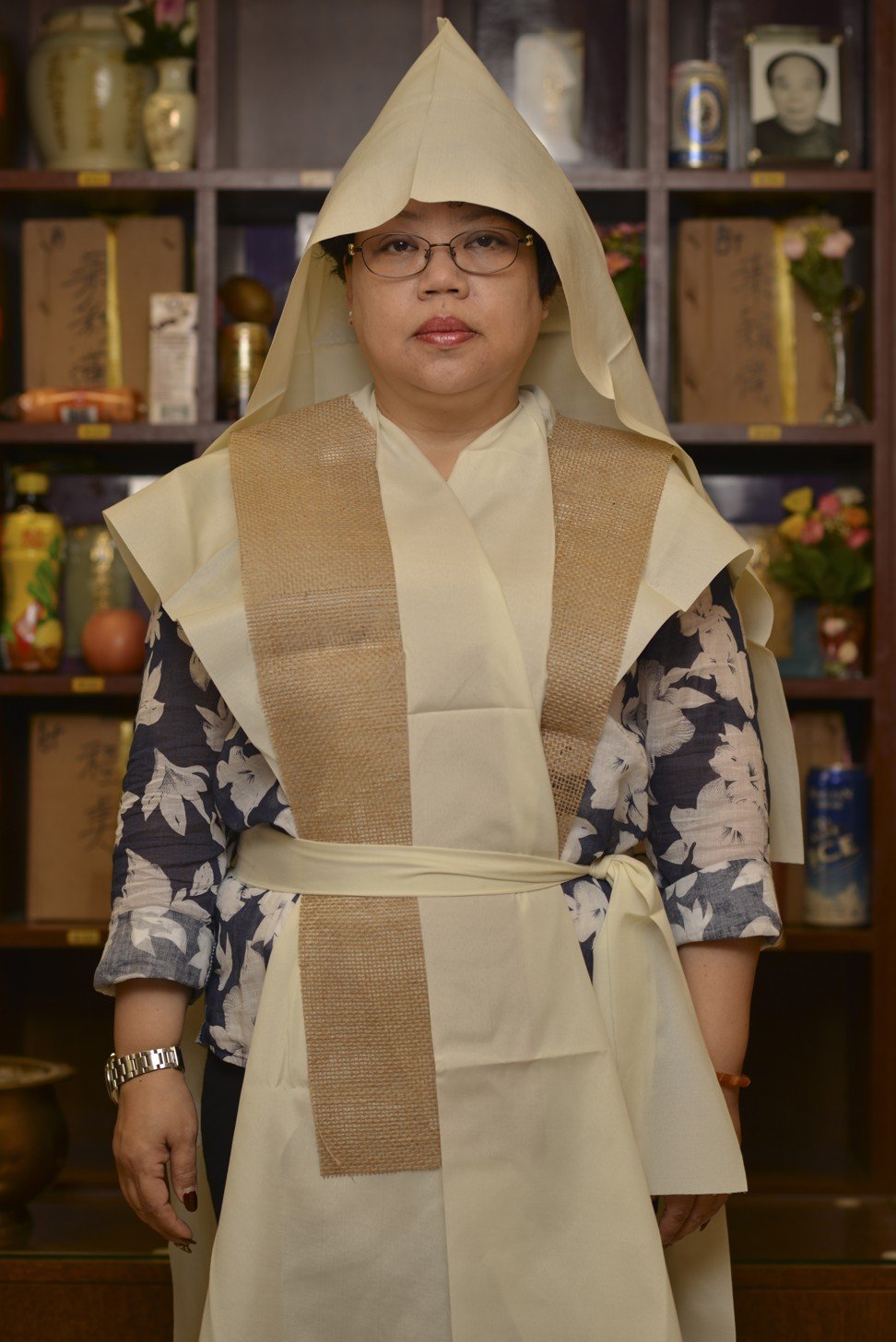
A heady odour of incense fills the air in Law’s shop, where numerous funeral urns containing ashes reside in antique wooden compartments, awaiting removal to a permanent resting place in a columbarium. Photos of the departed stand beside the urns, along with offerings of sustenance that the deceased may have enjoyed in life, such as fruits, candies, Coke and mooncakes.
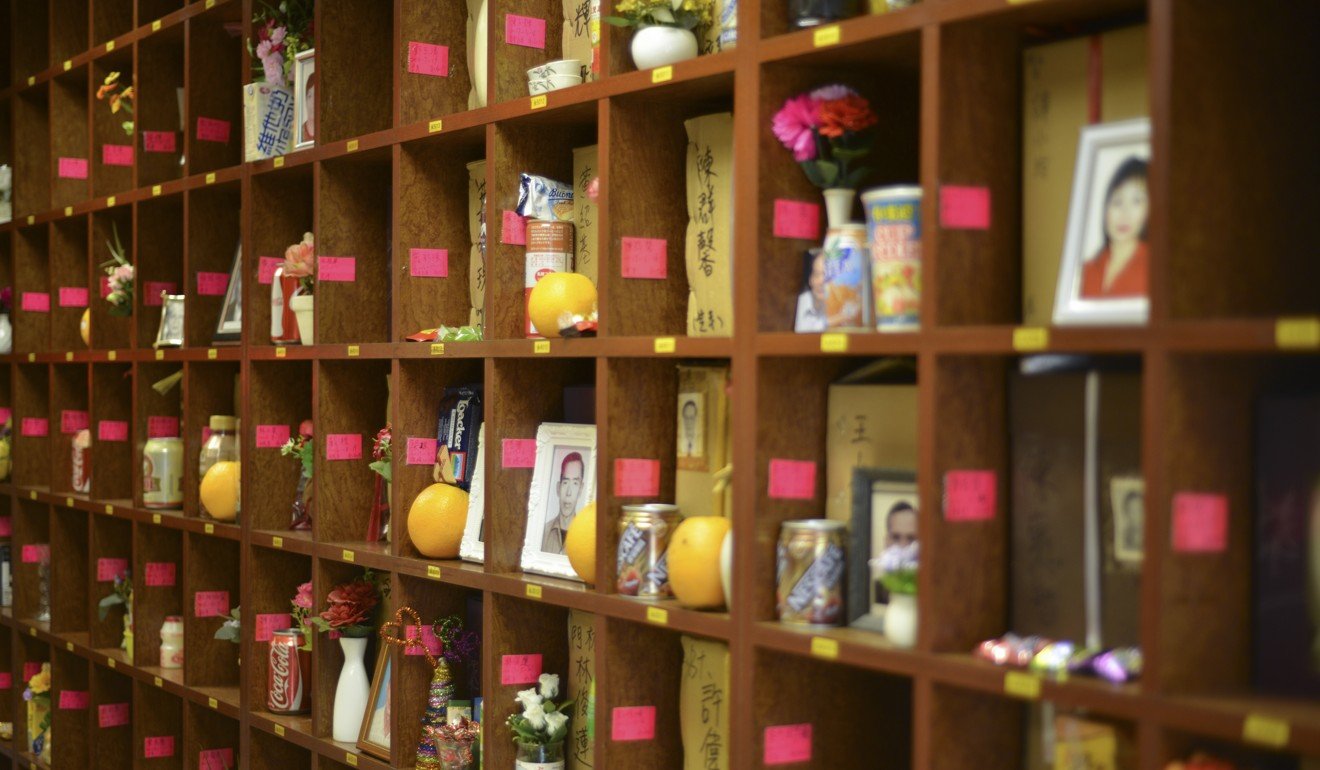
Law’s shop sells a range of funeral paraphernalia, including the white cotton and sackcloth garments worn by mourners. In the old days, the coarse, poor quality material was chosen to convey mourners’ humble reverence for the dead, Law says. Bright colours, particularly red, which is associated with many Chinese celebrations, are unacceptable at a funeral.
The men’s mourning costume also includes a white headband, while women don a hood to hide their worn-out features, Law says.
Among the flowers of mourning she sells are irises, orchids, chrysanthemums and lilies. Her wreaths include small flower baskets, often chosen by close family members of the deceased. These are placed beneath the late family member’s portrait at the front of the funeral hall, which implies that the relatives are kneeling humbly. Heart-shaped wreaths are a common choice.
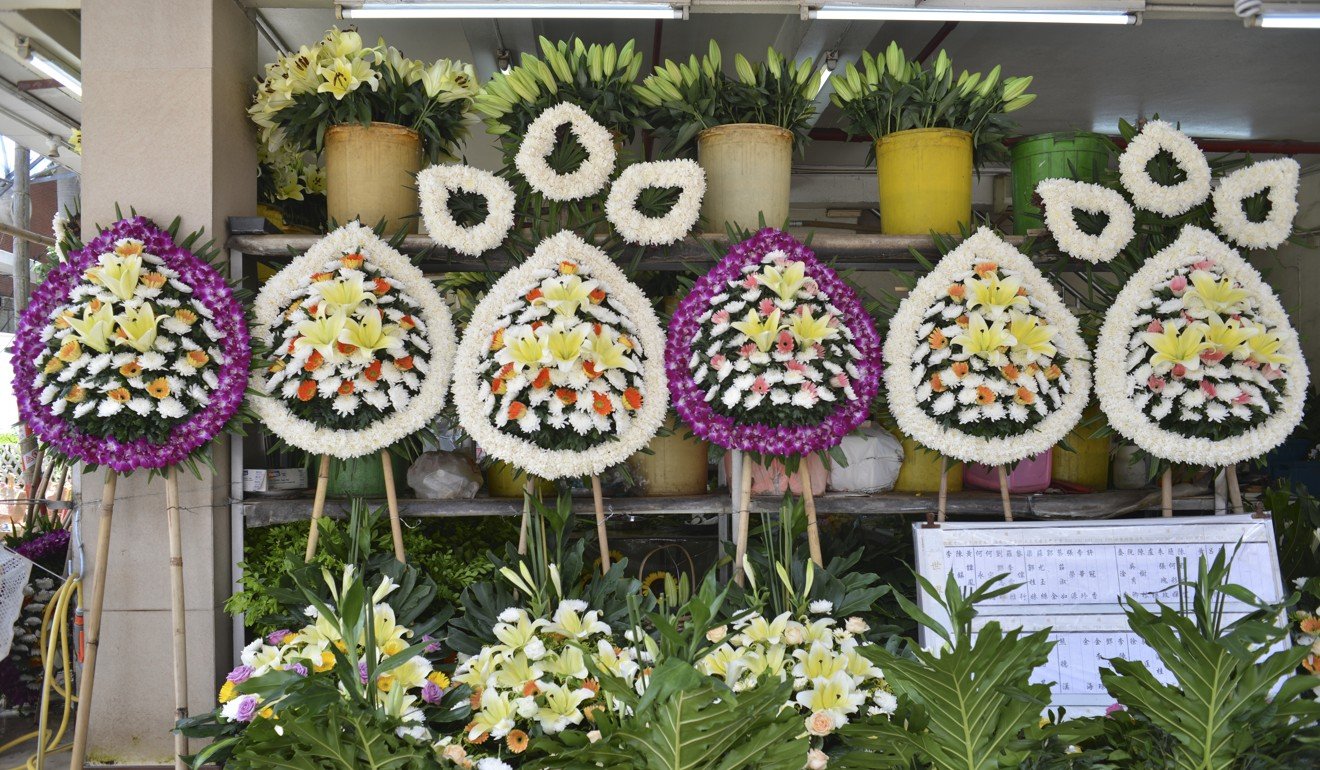
Taoist funeral practices run much deeper than the material realm, though, and the elaborate ceremony is steeped in ancient beliefs and rituals.
Green-eyed ghosts may prevent their lucky companion from leaving hell, so we have to keep them appeased
Taoism, like Buddhism – the second-most-common choice for a funeral service in Hong Kong, followed by a Catholic ceremony – holds that humans undergo an endless cycle of death and rebirth. In between, the soul resides in various realms of good and evil.
During the service, priests chant scriptures – their voices often inaudible against a cacophony of drums, cymbals, suonas, erhus and flutes – to uplift the soul of the departed and prevent their descent into hell.
The head priest circles a fire in which nine tiles have been placed, and flutters a sword made from peach wood, which is believed to ward off evil spirits. He then breaks the tiles, which symbolise the many levels of hell. In doing so, the priest opens the gates of hell to emancipate the soul. Another priest then sits on a lotus-shaped seat beside a photo of the deceased and chants scriptures.
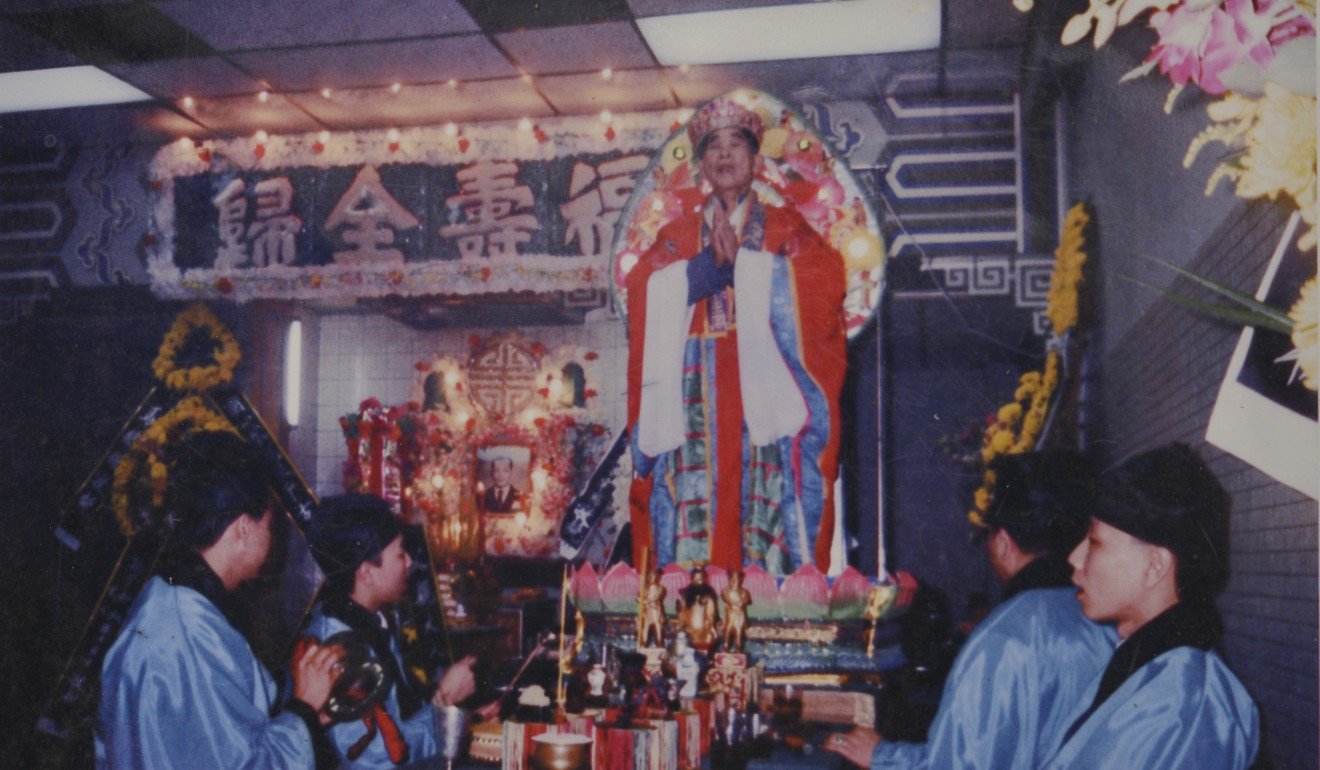
“The priest thereby symbolically becomes the incarnation of Guan Yin, the Goddess of Mercy in Chinese mythology,” who is often depicted seated on a lotus flower, says Andrew Ip Hiu-fung, the owner of Hop Fook Funeral Service in Wong Tai Sin. Ip’s family have been in the business for more than 40 years.

On the lotus seat, the priest will also pray for absolution of the sins of “other friends”. “There are many abandoned souls at a funeral that will be jealous of the dead person being prayed for,” Law says. “These green-eyed ghosts may prevent their lucky companion from leaving hell, so we have to keep them appeased. They can be memorialised and assisted in their rebirth by family and friends.
“You never know what there will be to obstruct the path of souls in the underworld.”
Why dying in Hong Kong is getting more complicated ... and expensive
Mourners assist by burning joss paper. Also called “ghost money”, this practice helps to “buy” the deceased’s escape from hell, which is “a “highly corrupt place”, says Ng Yiu-tong, permanent chairman of the Hong Kong Funeral Business Association and owner of Kam Fook Shau Funeral, also in Hung Hom. His family have been in the funeral business for more than 50 years.
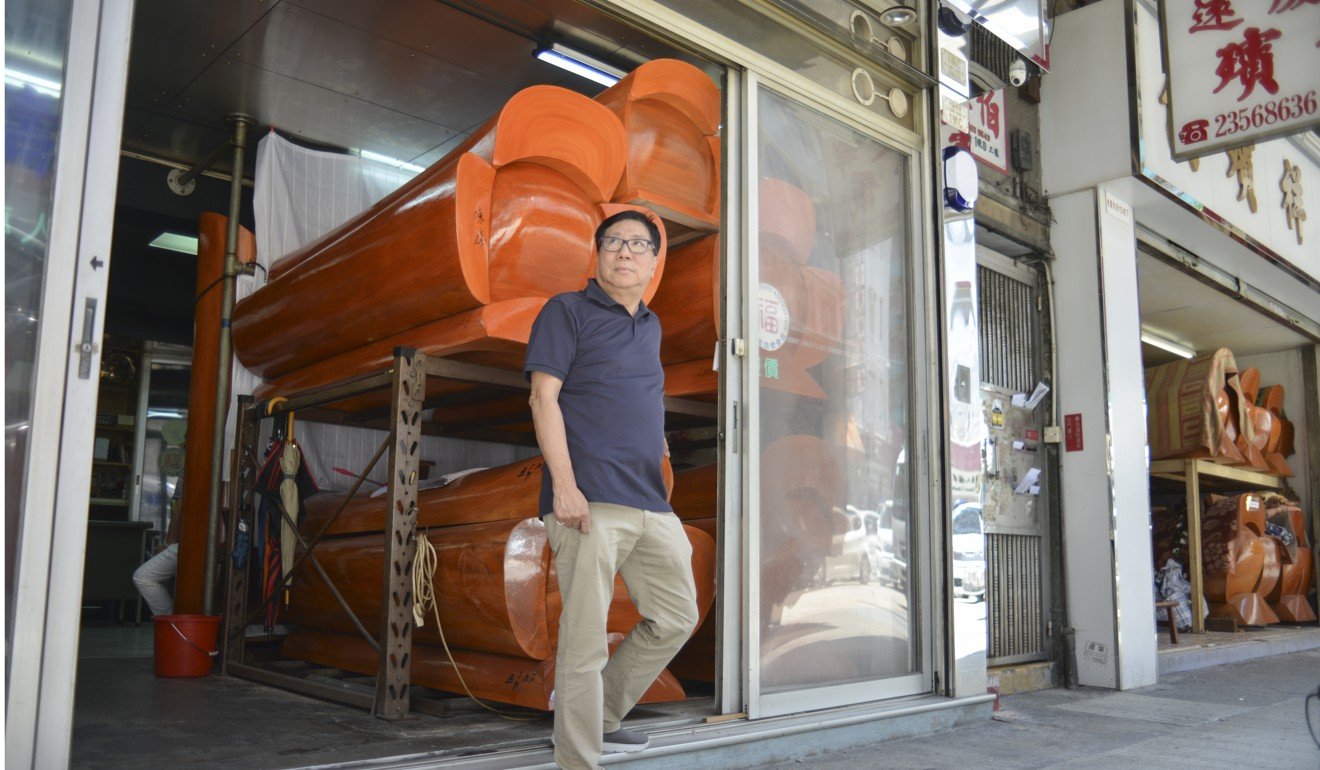
Other joss paper offerings, such as houses, servants and garments, are burned to symbolically provide the departed with a place to live, clothing to wear and people to take care of them in the underworld.
They also serve as a “golden key” to a more prosperous afterlife. “If the dead possess more houses, servants, clothes and money, it’ll be easier for them to meet other dead souls with a similarly wealthy background and be accepted into their circle for an affluent rebirth,” Ng says.

The living are not immune to malignant spirits, and astrological beliefs play a role in safeguarding mourners. If a guest’s Chinese zodiac sign clashes with that of the deceased, Ng says, they risk their souls being “dragged” into the coffin – either when the corpse is moved from the morgue into the coffin, or when the lid of the coffin is covered prior to the burial or cremation. In both cases, guests with conflicting astrological signs are advised to turn their heads away, or even leave the funeral hall.
Hong Kong columbarium clients fail to get refunds as new law kicks in
Beyond the funeral’s esoteric rites, family members and guests observe long-followed social traditions. For example, guests usually give the family a nominal sum of money in a white envelope – a gesture dating to poorer times when this would help cover costs of the funeral. The contribution must add up to an odd number. In Chinese culture, an even number would represent “double happiness”, which is inappropriate for the occasion.
Additionally, the figure must not end in a nine. In Cantonese, the number is a homonym for “long-lasting”, suggesting that the sombre mood will be never-ending.

Besides the money, guests can give the family another gift, but only one. Two could be regarded as a curse on the family, “You may be implying that there are two dead people in the family,” Ng says.
In return, hosts hand guests a small envelope containing a one-dollar coin and a fruit candy. A dollar was once enough for mourners to take a bus or tram home, releasing them from the sombre occasion. The first of the two Chinese characters which make up the word for fruit is similar to that of a term to wish someone good health.
“Fruit candies also symbolise sweetness, and can relieve guests’ bitterness,” Ip says.
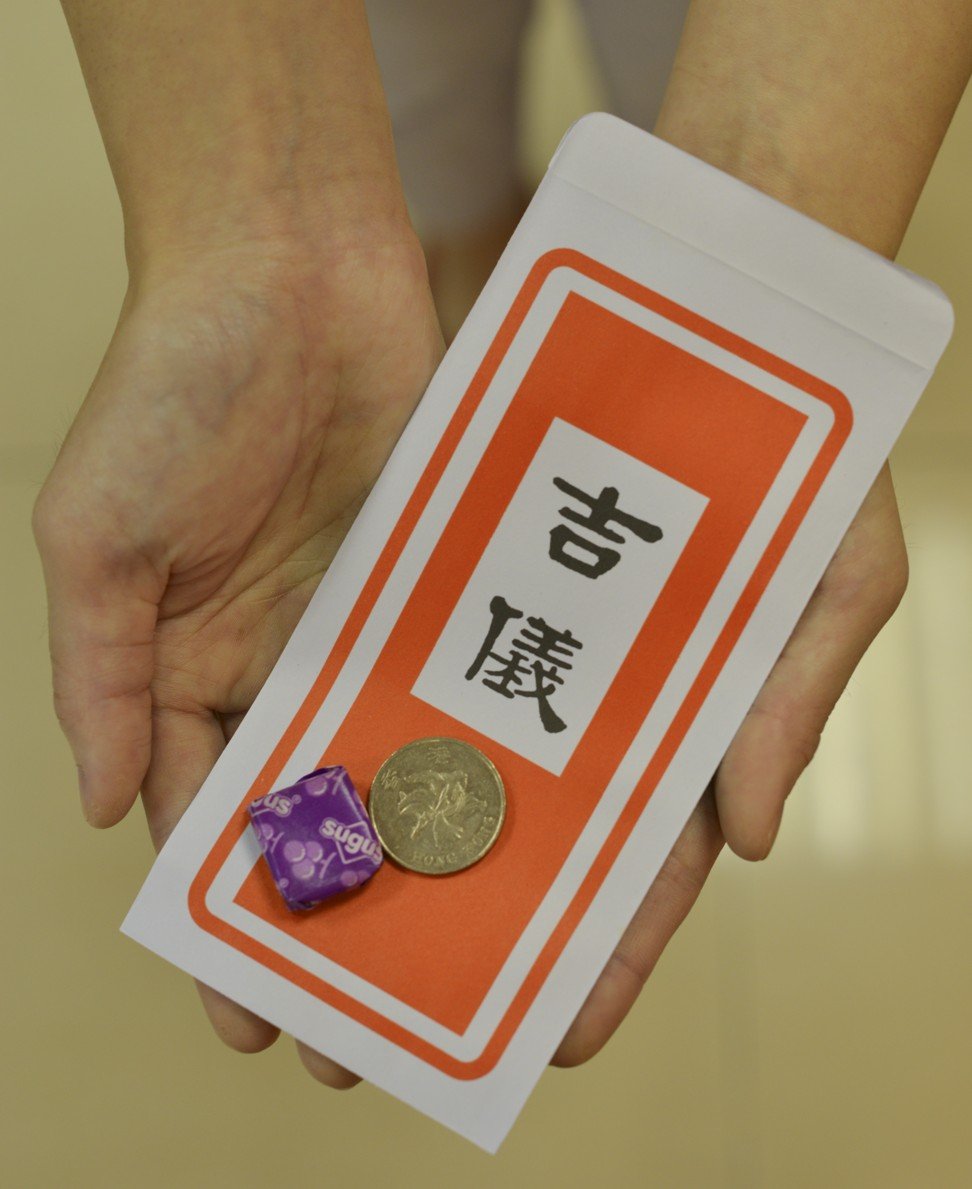
Guests take a Taoist talisman with them when they attend a funeral. This is a yellow piece of paper inscribed with their name, address and birthday. When they return home, they will burn the paper at the doorway and cross over it while it is still burning. This relates to the belief that ghosts are fearful of fire. “That way, bad joss won’t follow them anymore, and they will not bring bad luck back home,” Law says.
After the deceased’s body is put to rest, the spirit is welcomed once more at a feast held to thank guests for their attendance. The gathering traditionally includes eight dishes and a dessert, which is usually “sugar water”, a sweet, warm soup. The dessert is to be eaten first to bring sweetness and happiness to the occasion.
Hong Kong’s dead being left out in the cold: advocates demand fairer public columbarium system
Eight dishes are served up because in Chinese the number rhymes with a word for good fortune. The dishes tend to comprise primarily fish and meat, but beef and horse meat are forbidden.
“There are two powerful ‘ghost officers’ in the underworld, one with an ox-like head and the other a horse-like face. So, we mustn’t eat them,” Law explains.
In a final honour to the departed, one seat at the feast must be left empty, complete with cutlery on the table in front. This is to welcome the spirit of the dead relative to join the family for one last supper.
Most importantly, as a sign of respect, each time a new dish arrives the invisible VIP must be served first.
